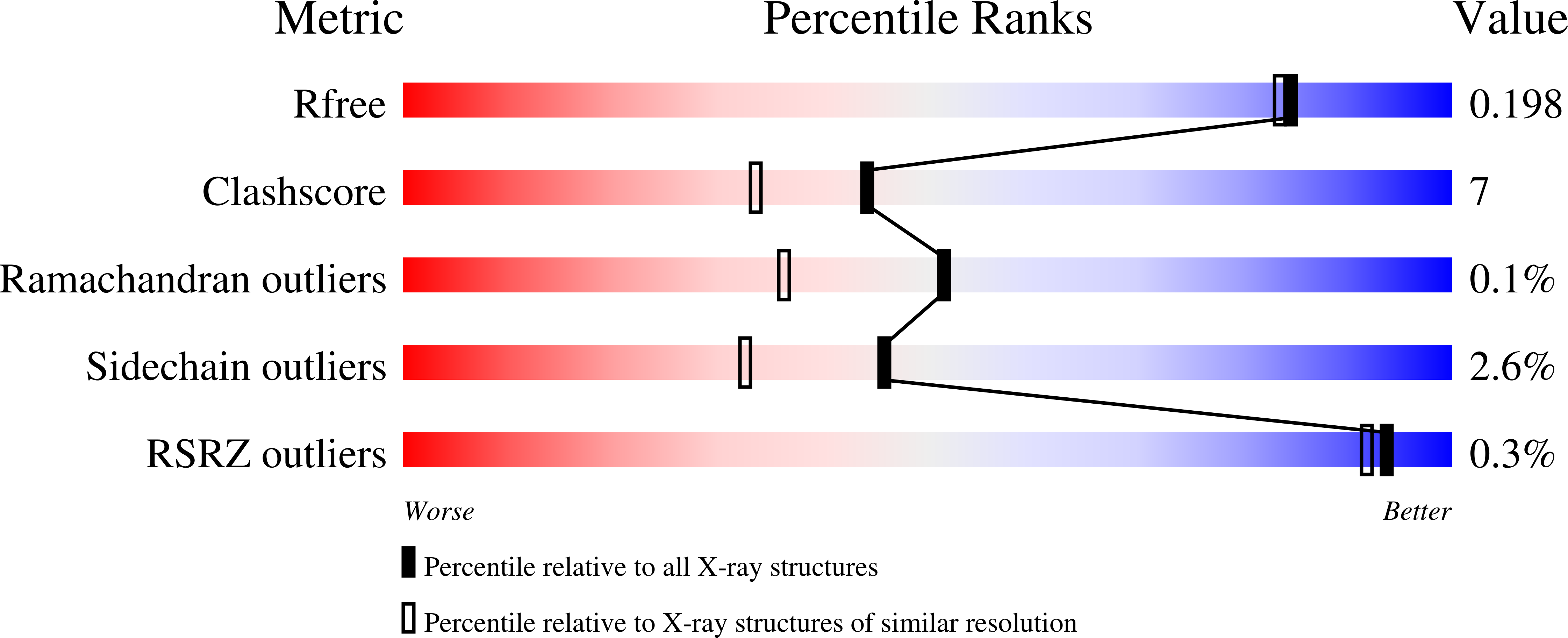Structural analysis of an epsilon-class glutathione transferase from housefly, Musca domestica
Nakamura, C., Yajima, S., Miyamoto, T., Sue, M.(2013) Biochem Biophys Res Commun 430: 1206-1211
- PubMed: 23268341
- DOI: https://doi.org/10.1016/j.bbrc.2012.12.077
- Primary Citation of Related Structures:
3VWX - PubMed Abstract:
Glutathione transferases (GSTs) play an important role in the detoxification of insecticides, and as such, they are a key contributor to enhanced resistance to insecticides. In the housefly (Musca domestica), two epsilon-class GSTs (MdGST6A and MdGST6B) that share high sequence homology have been identified, which are believed to be involved in resistance against insecticides. The structural determinants controlling the substrate specificity and enzyme activity of MdGST6s are unknown. The aim of this study was to crystallize and perform structural analysis of the GST isozyme, MdGST6B. The crystal structure of MdGST6B complexed with reduced glutathione (GSH) was determined at a resolution of 1.8 Å. MdGST6B was found to have a typical GST folding comprised of N-terminal and C-terminal domains. Arg113 and Phe121 on helix 4 were shown to protrude into the substrate binding pocket, and as a result, the entrance of the substrate binding pocket was narrower compared to delta- and epsilon-class GSTs from Africa malaria vector Anopheles gambiae, agGSTd1-6 and agGSTe2, respectively. This substrate pocket narrowing is partly due to the presence of a π-helix in the middle of helix 4. Among the six residues that donate hydrogen bonds to GSH, only Arg113 was located in the C-terminal domain. Ala substitution of Arg113 did not have a significant effect on enzyme activity, suggesting that the Arg113 hydrogen bond does not play a crucial role in catalysis. On the other hand, mutation at Phe108, located just below Arg113 in the binding pocket, reduced the affinity and catalytic activity to both GSH and the electrophilic co-substrate, 1-chloro-2,4-dinitrobenzene.
Organizational Affiliation:
Department of Applied Biology and Chemistry, Tokyo University of Agriculture, Sakuragaoka 1-1-1, Setagaya, Tokyo 156-8502, Japan.















